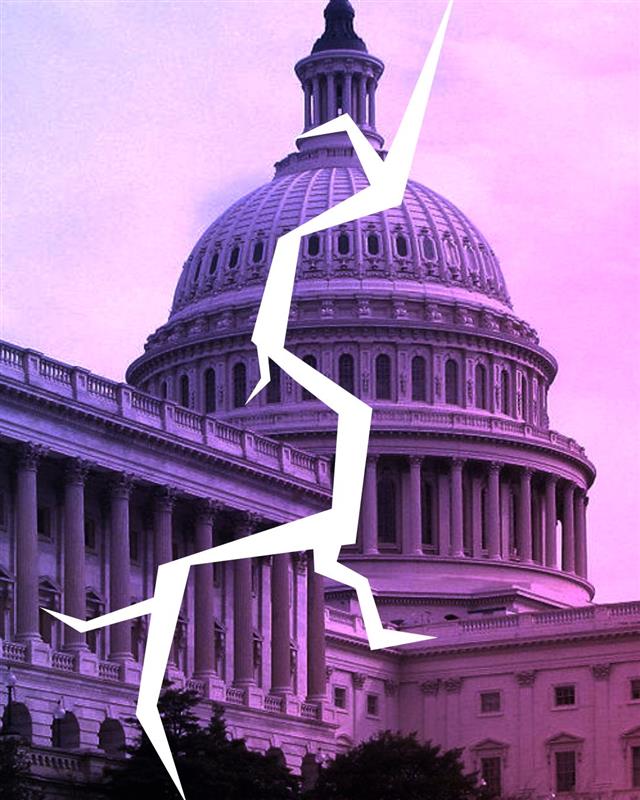A growing and politically diverse voting bloc could determine the outcome in key swing states.
The Big Picture
Over the past decade, voters identifying as LGBTQ+ have more than doubled. This demographic now constitutes a larger voting bloc than suburban white mothers—a group frequently discussed in election analyses.
Both parties should take note: LGBTQ+ voters could be the decisive factor in swing states that determine the outcome of the election.
A Gallup study tracking LGBTQ+ identification from 2012 to 2023 shows that self-identification has grown from 3.5% in 2012 to 7.6% in 2023, increasing steadily each year.
Additionally, research from the Williams Institute at UCLA shows:
- 1 in 5 Gen Z Americans and 1 in 10 Millennials identify as LGBTQ+.
- 14.9% of Americans aged 18-24 and 8.8% of those aged 25-34 identify as LGBTQ+.
Voter data mirrors this trend. AP exit polls from 2020 found that 7% of voters identified as LGBTQ+.
Zooming In
LGBTQ+ Voters Could Decide Swing States
In 2020, Biden won the LGBTQ+ vote in all six toss-up states, even though Trump won or tied the "straight" vote in five of them.
The Cook Political Report lists six states as "toss-ups" for 2024:
- Arizona
- Georgia
- Michigan
- Nevada
- Pennsylvania
- Wisconsin
The average margin of victory in these states in 2020 was just 1.25%.
If there were an 18-point swing among LGBTQ+ voters from 2020 to 2024, all six of these states would flip.
Trends Suggest a Shift Away from Democrats
In 2016, Hillary Clinton won 77% of LGBTQ+ voters.
In 2020, Biden won only 64%—a 13-point drop.
If that trend continues in 2024, and all other factors remain constant, Democrats would receive just 51% of the LGBTQ+ vote.
This 0.91% national shift may seem small, but consider:
- Biden won Georgia in 2020 by only 0.24%.
- If the LGBTQ+ vote continues shifting away from Democrats, Georgia would likely flip red.
- Arizona and Wisconsin would also likely flip, costing Biden re-election.
LGBTQ+ Voters Are Not a Locked-in Voting Bloc
Despite shifting away from Democrats, LGBTQ+ voters aren’t flocking to the GOP either.
According to The Independent Center’s nationwide LGBTQ+ survey:
- Only 22% of LGBTQ+ voters say they will support Trump.
- 21% say they will support an independent or third-party candidate.
- 13% remain undecided.
Moderates, Not Partisans
LGBTQ+ voters don’t fit neatly into a partisan box:
- Over 50% are not affiliated with either the Democratic or Republican party.
- 60% identify as ideologically moderate, falling between “somewhat liberal” and “somewhat conservative.”
- They aren’t particularly enthusiastic about Biden, but they also don’t trust the GOP to protect their rights (LGBTQ Nation).
The Road to the White House Runs Through the LGBTQ+ Vote
While much of the 2024 election coverage has focused on suburban voters, no demographic group has seen as large of a voting shift as LGBTQ+ voters from 2016 to 2020.
Both parties ignore this group at their own peril.
Independent Lens
LGBTQ+ voters are not a monolith—they are politically diverse, independent, and up for grabs.
- They prioritize economic and affordability concerns, just like most voters.
- They are frustrated with both parties—distrustful of the GOP but uninspired by Democrats.
- They are significantly more moderate than political narratives suggest.
The 2024 election will not be won through partisan loyalty. Instead, it will be decided by independent-minded voters, including a rapidly growing LGBTQ+ electorate.
Neither party can afford to take this group for granted. The road to the White House runs through the LGBTQ+ community.
Subscribe to our newsletter to stay informed on how independent voters are shaping the future of American elections.



%201.jpg)

